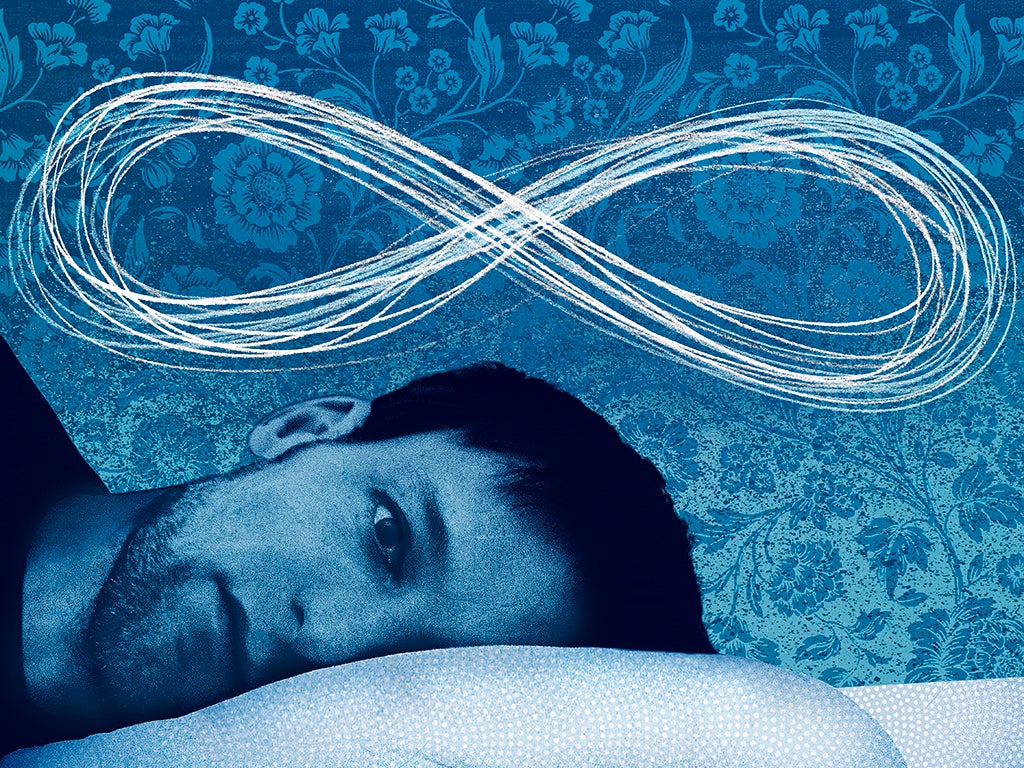Sleep paralysis: the waking nightmare where you can't move or speak
Episodes only last 4-6 minutes, but much like panic attacks, they can still exercise a powerful effect on the sufferer

When most people hear the word ‘nightmare’ they think of a scary dream that may involve a person’s teeth falling out, public humiliation, or being hunted by a scary monster. In these sorts of nightmares it is easy to know when the dream ends, as we are jarred awake and find ourselves surprisingly safe and secure in the comfortable confines of our bedroom. The original nightmare, however, was a different beast entirely.
This older conception was much more frightening and, in certain cultures, even believed to be life-threatening. Nightmares in this more archaic sense consisted of being:
(1) paralyzed except for your eyes
(2) oppressed (or feeling a weight on your chest)
(3) mute (i.e. unable to call out for help)
These three experiences all took place while you were clearly awake and, not surprisingly, also led to strong feelings of terror. Making matters worse (or at least scarier), nightmares usually had visual and tactile elements just as vivid as anything experienced in daily life.
Different times and cultures made sense of the nightmare in their own ways, and wove these experiences into many rich folklore traditions.
Some people believed that the nightmare was an actual nocturnal assault (by demons, ghosts, vampires, witches or extraterrestrials). This resulted in attempts to prevent further attacks, like placing crosses in the bedroom, or even go on the offensive, i.e. sleeping with knives or other weapons.
A careful reading of many “supernatural” tales includes descriptions of paralysis and someone or something on top of the victim, usually engaging in some type of assault. Other cultures believed that nightmares were the result of more natural processes (e.g., “bad air” or a dietary faux pas).

Contemporary physicians and psychologists recognize the nightmare as a specific manifestation of sleep paralysis. Sleep paralysis is a recognized medical condition common in narcolepsy, but which can also be found in otherwise healthy individuals.
In spite of the fact that many people have not heard of it, it is actually quite common. It occurs in 8% of the general population with much higher rates in students (28%) and psychiatric patients (32%). Most find it to be a harmless, albeit scary event that is a rare occurrence in their lives.
However, a small percentage of people have it to such a degree that it becomes a problem. People in this group may find themselves trying to avoid sleep, becoming anxious when they enter their bedroom, or worry about when the next episode will occur.
Other individuals, as described above, may have the mistaken belief that the hallucinated “attackers” are real. Episodes only last 4-6 minutes, but much like panic attacks (which are also relatively brief, scary experiences) they can still exercise a powerful effect on the sufferer.
Unfortunately for those with severe sleep paralysis, there are currently no well-validated treatment options. However, certain drugs that suppress rapid eye movement (REM) sleep (e.g., antidepressants) and forms of psychotherapy may be helpful. Further, just learning what sleep paralysis is, that it is not uncommon, and that it is not physically harmful can help people to feel better.
Brian A. Sharpless, Ph.D; M.A, Assistant Professor of Psychology, Washington State University
Karl Doghramji, M.D, Professor of Psychiatry, Neurology, and Medicine, Thomas Jefferson University
Sharpless and Doghramji recently collected the scientific and cultural aspects of sleep paralysis in their new book, Sleep Paralysis: Historical, Psychological, and Medical Perspectives, Oxford University Press. Independent Readers can receive a 30% discount through entering the promotional code: AMPROMO12 through www.oup.com
Join our commenting forum
Join thought-provoking conversations, follow other Independent readers and see their replies
Comments